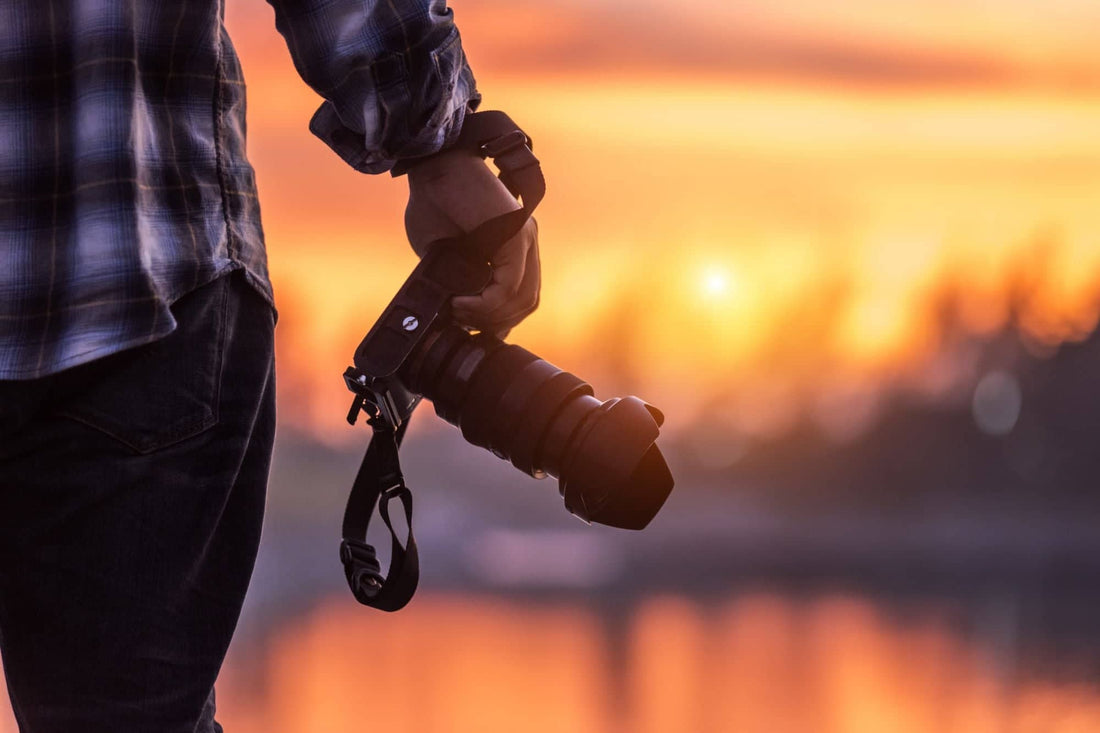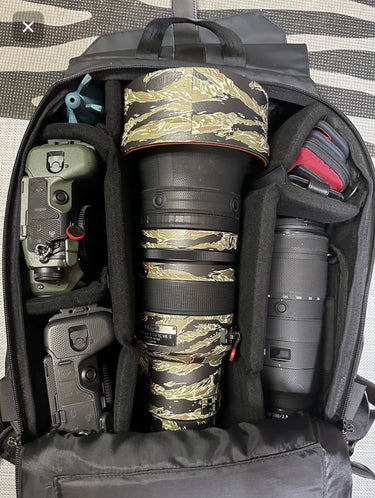
What is Stock Photography?
Share
From the office worker gripping his hair in rage, to an appetizing array of fruits and berries, we've all seen stock images. No doubt, those lines and other watermarks put over them are hard to miss.
But what is a stock photo? Seriously, what is stock photography? Also, why can't you use them for free?
Luckily, if you're wondering what is photography, and specifically stock photography, we've got you covered. Let's dive in!
What is Stock Photography?
Stock photography is a broad term that encompasses photos licensed for specific uses. These photography stock images typically fall under the category of marketing and advertising.

In its most lucrative form, a stock photography business is an industry that produces and sells imagery. Then, these images can be purchased by customers, usually businesses or companies. These customers pay a fee to buy the right to legally use photos, and then they can do whatever they want with them. However, the professional quality of stock photos makes them a great choice for projects and advertising.
Photographers take quality marketing images, stock agencies pay them, and customers pay to use those images.
What is the Meaning of Stock Image Photography?
You might be wondering: when did stock photography agencies begin, and why?
Stock photography became popular in the 1920s, when H. Armstrong Roberts started the first stock photography agency. He mainly sold generic images that could be used in advertising.

Today, living in the digital age has made stock photography increasingly important. Some stock agencies charge hundreds or thousands of dollars for images. On the other hand, microstock photography can sell for as little as 25 cents.
In this way, stock photography is important because it plays a role in global marketing. Companies use the images to advertise the quality of their material, brand, services, or anything else.
Additionally, stock photography also provides work for photographers. When photographs are sold, the stock agencies will split the revenue with the photographer.
Still wondering what is stock photography? Then continue scrolling.
How does Stock Photography Work?

Of course, stock photography starts with a photographer willing to sell their images to an agency. Stock photography can be done in a studio or the photographer can sell images they've already taken.
After the photographer joins with the stock agency, the agency will make use of licensing to sell the images. Keep in mind that in order to build up a bank of images to sell to customers, agencies need a lot of photos. Stock photographers can be expected to sell quite a bit of their work.
And, you'd be surprised how many people are willing to pay. Companies actually save a decent amount of time, money and resources by buying stock photography. Therefore, they'll be more than willing to buy something that fits their marketing needs.
Types of Stock Photography Licensing
To sell stock photography, agencies will employ the use of licensing. The most common of these include:
- Public domain (PD): Public domain licensing actually means that the image is free to use. You heard me, there is Free stock photography. Typically, these photos being free is caused by their intellectual property rights expiring.
- Royalty-free (RF): Royalty-free licensing makes use of copyright. Photos under this policy can be purchased through a one-time payment. Once purchased, customers can use the image as many times as they'd like. Most RF-licensed images aren't very expensive either, coming in at an average cost between $1-$20.
- Rights-managed (RM): Rights-managed licensing mainly differs from RF in that the use of the image is restricted. That means customers are able to purchase a one-time or limited time use of the photo, but after that, it can be copyright striked. This is popular among stock agencies for obvious reasons, and can be rather pricey. Photography stock images under this licensing can cost up to $1,000 or more.
Types of Stock Photography

For simplicity’s sake, we’ll briefly explain the most important and common types of stock photography. They are:
- Macrostock: The most traditional stock photography. It's exclusive, and customers tend to pay a higher fee for its uniqueness. In some cases, agencies will even limit the number of customers who can purchase.
- Midstock: The middle ground that's often sold online. These images can be exclusive or non-exclusive, and aren't as expensive as Macrostock images.
- Microstock: These images aren't exclusive, and are far cheaper because of it. The digital age has made this form of stock photography extremely popular.
How to Create Stock Photography

If you’re an up-and-coming photographer who’s interested in doing some stock photography, you might wonder where to start. Of course, you’ll want to know how to create professional images.
Luckily, we have some tips for you if you're still wondering what is stock photography:
- Use Ambient Lighting. Obviously you want your image to be as clear as possible. WIth that in mind, don't be afraid to use and flood the area with ambient light.
- Use a Tripod. Given that you want your image to be as clear and focused as possible, make sure you use a tripod!
- Use the Rule of Thirds. This will help you create interest, improve your composition, and highlight your subject.
- Bring your Camera Bag. For safety and security between shoots, we recommend The Voyager. This camera and lens backpack packs a serious amount of gear for its size, fitting two DSLRs, up to seven lenses, a laptop, a tablet, and other accessories. All this storage makes it easy to pack anything and everything you’ll need for your stock photoshoot. This could be a camera backpack for women and men!
- Use Real Employees. If you’re doing a commercial shoot for employee stock footage, consider using real employees over models. These people know their jobs, and will look more authentic.
Up Next: What is Commercial Photography?
Now that you know the basics of stock photography, tell us a story in the comments about the funniest stock photo you’ve seen. We’d love to hear it!
And, if you want to learn more about photography’s role in advertising, check out our article on commercial photography!






























2 comments
I am collage student
I will be work this platform